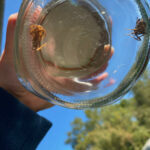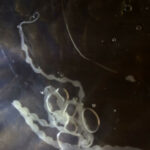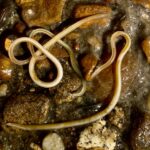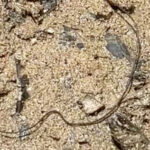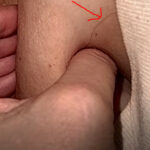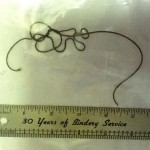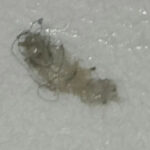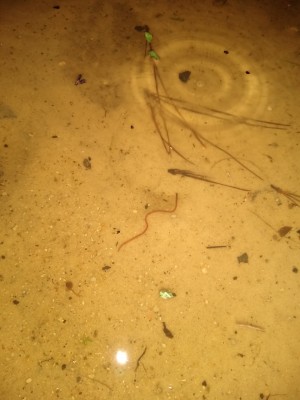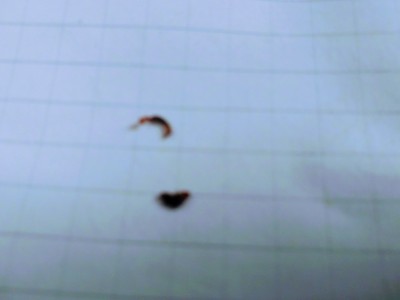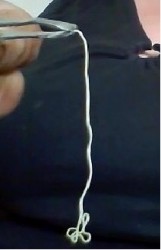
We received a long and fairly complicated, but interesting, question a couple of days ago about horsehair worms in a reader’s aquarium. (She referred to them as “horse hair worms,” which is reasonable, although this is a deviation from the common spelling.) In her aquarium is a tree frog and a snail, and the other night she put ten crickets in the aquarium to feed the frog. When she woke up, she found several horsehair worms in the water of the aquarium. Our reader is first of all wondering if the horsehair worms are harmful or in any way dangerous to her frog or snail. More generally, she is wondering if horsehair worms are harmful to amphibians, or if they could present any dangers to her family, dog, chickens, or ducks. Basically, are horsehair worms harmful to any creatures other than the insects they commonly prey on, like crickets, cockroaches, and grasshoppers, as well as to non-insects, like millipedes and centipedes?
Before the reader asked any other question, she wanted to make sure she found horsehair worms, and to that end she submitted this picture:
This creature, with its long thin body, does look exactly like a horsehair worm. Moreover, the scenario in which the worms were found is perfectly consistent with horsehair worms. Crickets are one of the primary insects horsehair worms infect, and the worms only leave the host insects’ bodies when they are near water, which explains why they exited the crickets’ bodies upon being put in the aquarium, in which there was evidently some dish of water. So, there is every reason to assume our reader found horsehair worms and basically no reason to assume she didn’t. We will move forward with our answer accordingly.
Based on everything we have read and written about horsehair worms, our reader doesn’t have much to worry about. We have actually written specifically about horsehair worms and their victims before, and in this article we said what we said above: the worms primarily go after crickets, grasshoppers, and a few other types of insects. In addition to insects, horsehair worms will attack millipedes and centipedes, and they will also infect crustaceans on occasion. Although this doesn’t appear as common, there are reports of horsehair worms infecting snails and slugs, so this is the one pet of our reader’s that may fall victim to horsehair worms. As far as we can tell, though, this exhausts the list of possible horsehair-infection hosts. The one notable counterexample we have found is in a study by the National Institute of Health detailing two cases of human horsehair-worm infection. One victim is an elderly woman and the other a one-year-old baby, both of whom live in Japan. This is the only case we were able to dig up that suggests that horsehair worms are anything but innocuous to animals outside their range of normal victims. Other good sources, such as a guide to horsehair worms by OSU’s Department of Entomology and Plant Pathology, explicitly state that “[h]orsehair worms are not harmful to humans, domestic animals, or plants.”
So, we don’t think horsehair worms present any danger to the various creatures, human and animal, that are in our reader’s house, with the possible exception of her pet snail. Apart from the one (admittedly unsettling) case of horsehair worms infecting the elderly woman and the one-year-old baby in Japan, the consensus clearly suggests that horsehair worms present no danger to humans or pets (again, besides snails), and that they infect a fairly narrow range of creatures, which for the most part are of no concern to our reader. Hopefully this puts our reader’s mind more at rest, concerns about her snail notwithstanding. If our reader wants to know more about horsehair worms, we have written about them on a number of occasions – we have an overview of horsehair worms, as well as several articles about horsehair worms in specific environments, like in the swimming pool and toilet.
All About Worms is always free, always reader-supported. Your tips via CashApp, Venmo, or Paypal are appreciated! Receipts will come from ISIPP Publishing.
You might also find these guys interesting!




